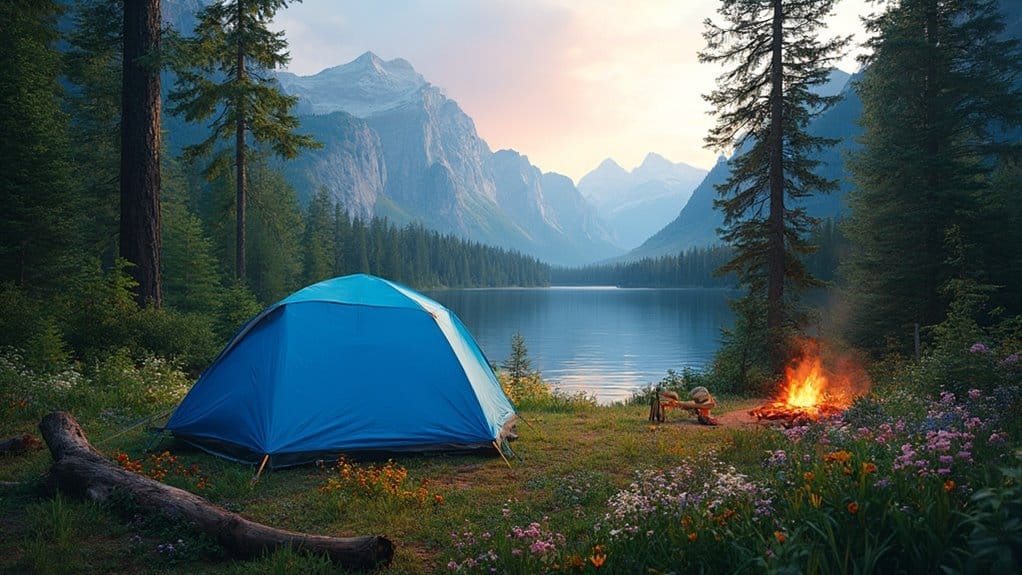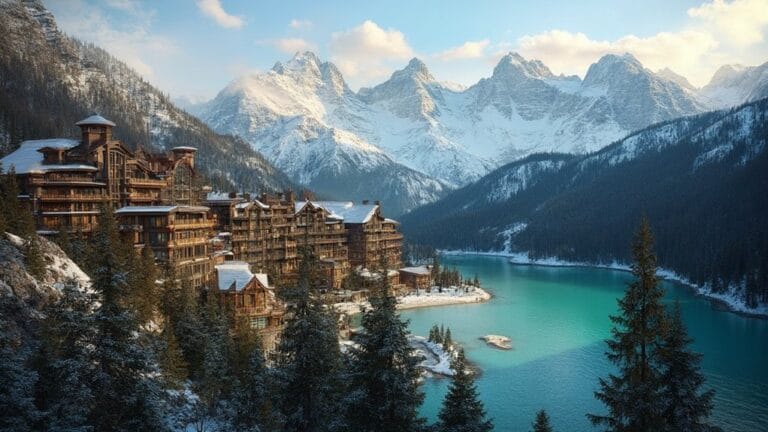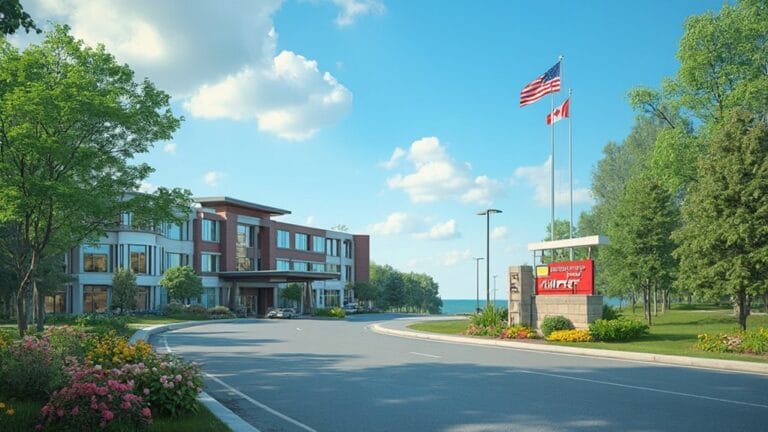You've gotta check out the Pacific Northwest Trail for some of the best camping spots! Picture yourself at Flathead National Forest, listening to the soothing sounds of Red Meadow Lake while sipping morning coffee. Or how about the unique glamping at Copalis Beach, where you can sleep in cozy canvas tents? Don't forget about Glacier National Park, but make sure to snag those permits in advance. Whether you're fishing at Camp Sherman or chilling at Fort Stevens State Park, there's something for everyone. Exciting stories and essential tips are just around the corner, waiting for you to explore!
Key Takeaways
- Explore camping at Flathead National Forest, featuring scenic spots like Red Meadow Lake and Tuchuck Campgrounds for diverse experiences.
- Experience unique glamping options at Copalis Beach or retro airstreams at Hart's Camp for a comfortable stay.
- Reserve campsites in Glacier, North Cascades, and Olympic National Parks, adhering to their specific regulations and permit requirements for overnight stays.
- Utilize group camping options at designated campgrounds, offering amenities and social opportunities for larger parties.
- Follow Leave No Trace principles to preserve the natural beauty of the Pacific Northwest Trail while enjoying diverse ecosystems and wildlife.
Overview of Pacific Northwest Trail
The Pacific Northwest Trail is often celebrated for its stunning diversity and breathtaking landscapes. Stretching an impressive 1,200 miles through Montana, Idaho, and Washington, this trail's history dates back to its designation as a National Scenic Trail in 2009. You'll find yourself traversing five primary geographic areas, from the rugged Rocky Mountains to the serene shores of the Pacific Ocean.
As you hike, you'll encounter scenic highlights that'll take your breath away, like the majestic Cathedral Pass in Washington, peaking at over 6,800 feet, or the lush greenery of the Olympic Peninsula. Each section offers a unique adventure, whether you're wandering through the North Cascades or enjoying the vibrant beauty of Puget Sound. The trail features a total elevation gain/loss of 205,211 feet, reflecting its challenging yet rewarding nature.
This trail isn't just about the views; it's a journey through diverse ecosystems and wildlife. Keep your eyes peeled for grizzly bears and moose, but don't worry, you'll have plenty of resupply options in small towns along the way. The Pacific Northwest Trail invites you to explore its wonders, with experiences that'll leave you inspired and ready for your next adventure! So, lace up those boots and hit the trail!
National Forest Camping Options
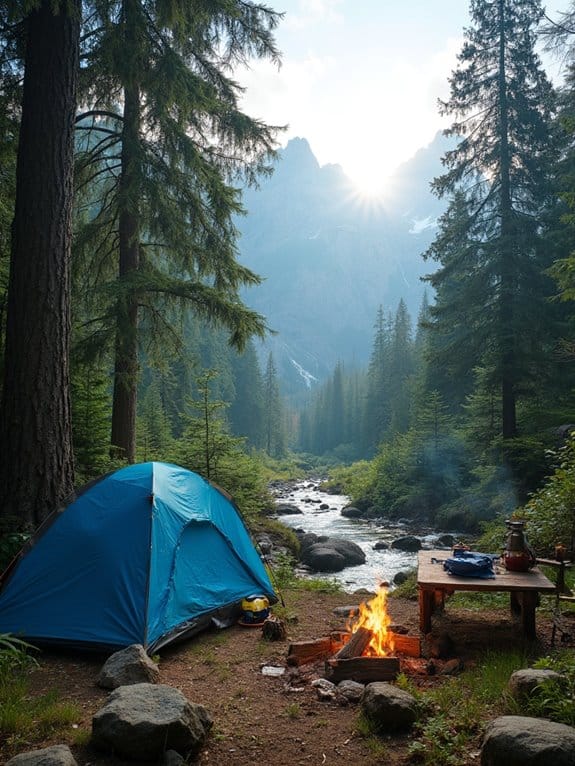
Camping options in the national forests along the Pacific Northwest Trail are plentiful and varied, catering to every type of outdoor enthusiast. Whether you're into campground camping or prefer the freedom of dispersed camping, you'll find something that suits your style. For example, Flathead National Forest in Montana offers awesome spots like Red Meadow Lake and Tuchuck Campgrounds, both equipped with essential campground amenities. If you're feeling adventurous, you can opt for dispersed camping, which is totally free with a self-registration permit!
Over in Kootenai National Forest, you can explore the Koocanusa, Tobacco, and Yaak areas for more developed camping. And let's not forget the Idaho Panhandle National Forests, where spots like Brush Lake and Trapper Creek await you. Each of these forests has its own charm and unique scenery, so you can't go wrong. Additionally, the PNT spans 1,200 miles across these national forests, providing breathtaking views and diverse ecosystems to enhance your camping experience.
Just a quick heads-up: always follow local regulations and remember the Leave No Trace principles when picking a dispersed campsite. Developed campgrounds may require reservations through Recreation.gov, but the beauty of the wild beckons for those ready to roam freely! So, pack your gear and get ready for an unforgettable adventure!
National Park Camping Guidelines
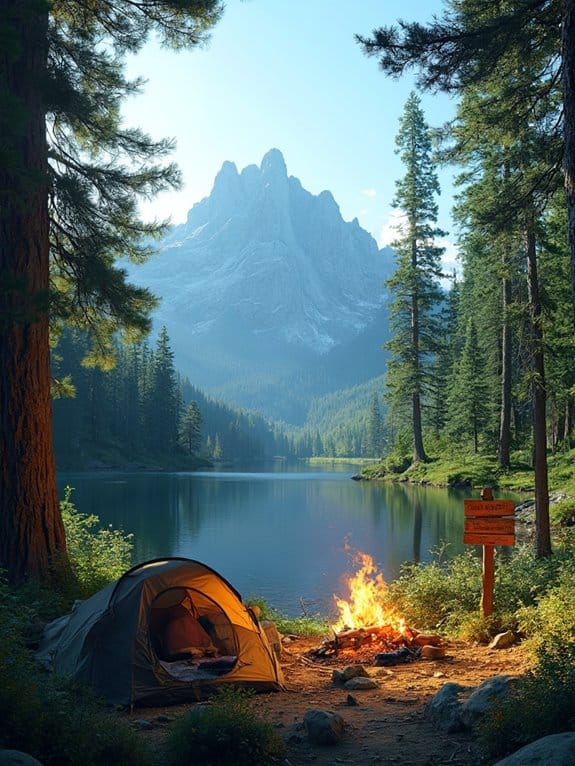
Maneuvering the national parks along the Pacific Northwest Trail requires some preparation, especially when it comes to camping. You can't just pitch your tent wherever you like—every park has its own camping regulations. For instance, in Glacier, North Cascades, and Olympic National Parks, you'll need to fill out a permit application for overnight stays. Trust me, getting that sorted in advance is a lifesaver, especially during peak season.
For Glacier, you can reserve online, but remember, there's a 16-mile daily limit that can feel like a marathon after a long day of hiking. Olympic National Park charges $8 per adult per night, which isn't too bad, and if you're staying longer, you might consider the $45 Wilderness Annual Pass. Additionally, be mindful that dispersed camping is not allowed in these parks, so it's crucial to stick to designated sites.
Oh, and don't forget about those quota areas in Olympic! Places like the Sol Duc/Seven Lakes Basin can fill up fast, so planning a route around them makes sense. In short, do your homework, secure those permits, and you'll be well on your way to unforgettable adventures in the wild. Happy camping!
Unique Camping Experiences

When it comes to unforgettable nights under the stars, the Pacific Northwest offers a variety of unique camping experiences that go beyond the traditional tent setup. If you've ever thought about glamping trends, you're in for a treat! Picture yourself nestled in a cozy canvas tent at Copalis Beach, Washington, with fresh linens and ocean views. Or how about staying in a retro airstream at Hart's Camp near Pacific City, Oregon? Luxurious beds and a pet-friendly vibe make it a fantastic getaway.
For history buffs, check out Fort Stevens State Park in Oregon. You can explore unique bunkers and enjoy beach access while soaking up some local history. Camp Sherman is another gem tucked away in the Deschutes Forest, perfect for hiking and fishing. With rich marine life along the coast, you may also encounter seals and sea otters while enjoying your camping experience.
These unique camping spots not only immerse you in nature but also encourage you to create lasting memories. So, whether you're lounging in a yurt at Beverly Beach or fishing at Diamond Lake, the Pacific Northwest is sure to offer experiences that'll make you laugh, marvel, and dream under the starry skies. Enjoy every moment!
Planning Your Camping Trip

Starting on a Pacific Northwest Trail adventure requires careful planning to guarantee a smooth and enjoyable experience. First things first, you'll need to sort out your camping gear. Think tents, sleeping bags, and cooking supplies, but don't forget your first-aid kit—trail safety is no joke! Depending on where you're headed, you might need a free self-registration permit for dispersed camping. If you prefer a bit more structure, check out the developed campgrounds near the trail corridor, but remember to reserve in advance through Recreation.gov.
Now, if you're aiming for backcountry camping in places like Glacier National Park, you'll have to use specific campsites. No wild camping here! For a taste of the ocean, try Kalaloch or Mora campgrounds, while the rainforest vibe is perfect at Hoh campground. Many campgrounds in the Pacific Northwest, especially in national parks, require advance booking during the busy summer months to ensure you have a spot.
And hey, whether you're staying at a historic cabin or pitching a tent, always stick to Leave No Trace principles. Planning ahead really pays off, trust me. You don't want to arrive at a full campground after a long day on the trail! So gear up, map out your route, and get ready for an epic adventure!
Essential Travel Resources
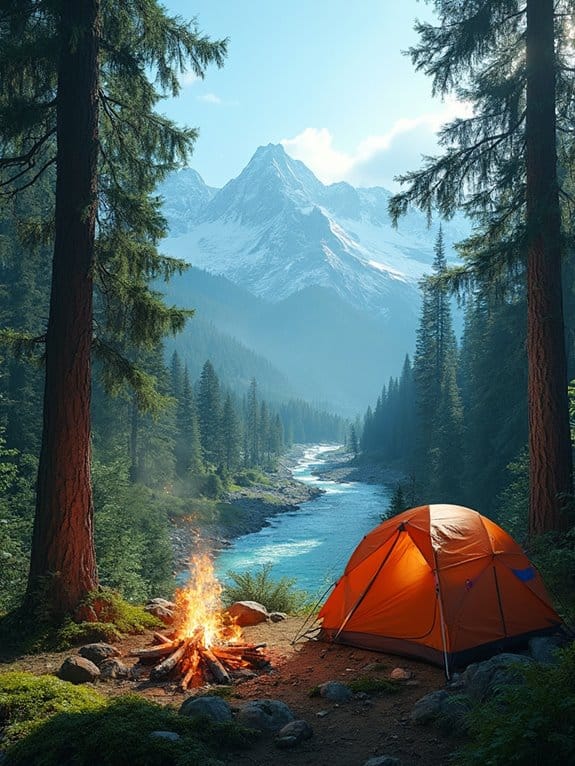
Equipping yourself with essential travel resources can make all the difference in your Pacific Northwest Trail adventure. First off, swing by the PNTA website for free trail maps and the latest conditions; trust me, you don't want to be caught off guard by a sudden trail closure. If you're venturing into the unknown, grab the Pacific Northwest Trail Digest by Tim Youngbluth—it's like having a trusty sidekick for guiding the 1,200-mile route!
Don't forget your gear recommendations! A good navigation app, like the Far Out Guide to the PNT, can save your bacon. But hey, always pack physical maps too; they're your best friend when technology fails. Familiarity with multiple navigation methods will also increase your chances of a successful hike.
For camping, make sure you snag your backcountry permits if you're planning to stay in Glacier, North Cascades, or Olympic National Parks. If you're feeling adventurous, consider dispersed camping in national forests—just remember to register at some trailheads.
Oh, and before you head out, check in with the PNT Hikers Facebook group for trail safety tips and to connect with fellow adventurers. With the right resources, you're set for an unforgettable journey!
Frequently Asked Questions
What Are the Best Times of Year to Hike the PNT?
Picture perfect Pacific Northwest hiking happens from late June to late September. With delightful weather considerations and clear trail conditions, you'll enjoy stunning scenery, fewer snow challenges, and warm temperatures during your unforgettable outdoor adventure.
Are There Any Specific Wildlife to Watch for Along the PNT?
When you're hiking the PNT, keep an eye out for diverse wildlife. Capturing animal behavior through wildlife photography can be rewarding, especially with bears, seals, and various bird species thriving in the area.
Can I Camp With My Dog on the PNT?
You can camp with your dog on the PNT, but it's essential to find dog-friendly campsites. Remember to practice trail etiquette—keep your dog leashed where required and always respect other hikers and wildlife.
How Do I Find Water Sources on the Trail?
To find water sources on the trail, use trail navigation tools and resources from the Pacific Northwest Trail Association. Always carry water purification methods, ensuring you stay hydrated and safe during your adventure.
What Should I Do in Case of an Emergency While Hiking?
Imagine the sun setting, shadows growing longer. In an emergency, prioritize safety tips: use your emergency gear, signal for help with a whistle, stay calm, and assess your surroundings. Preparedness is your best companion on the trail.

